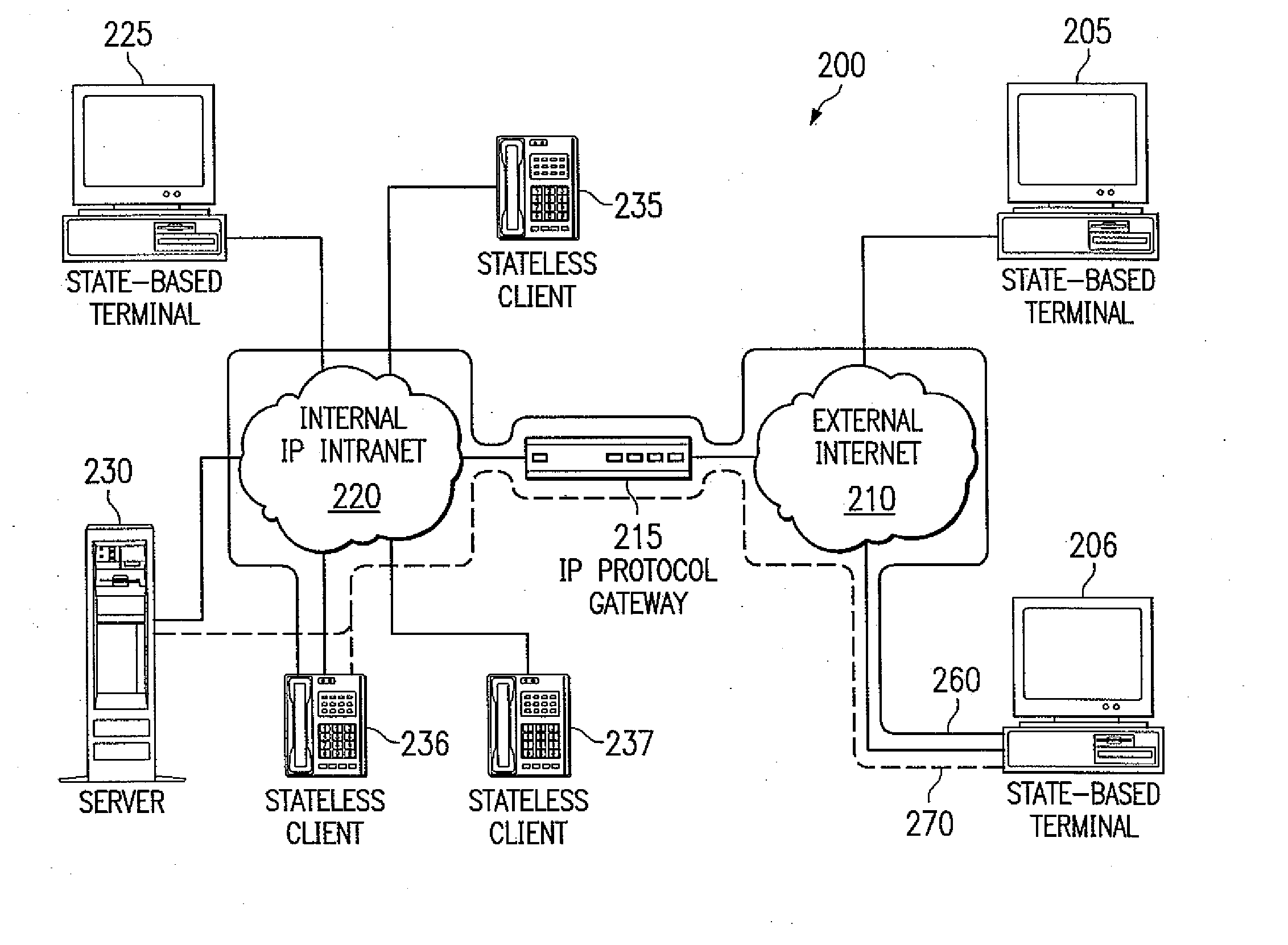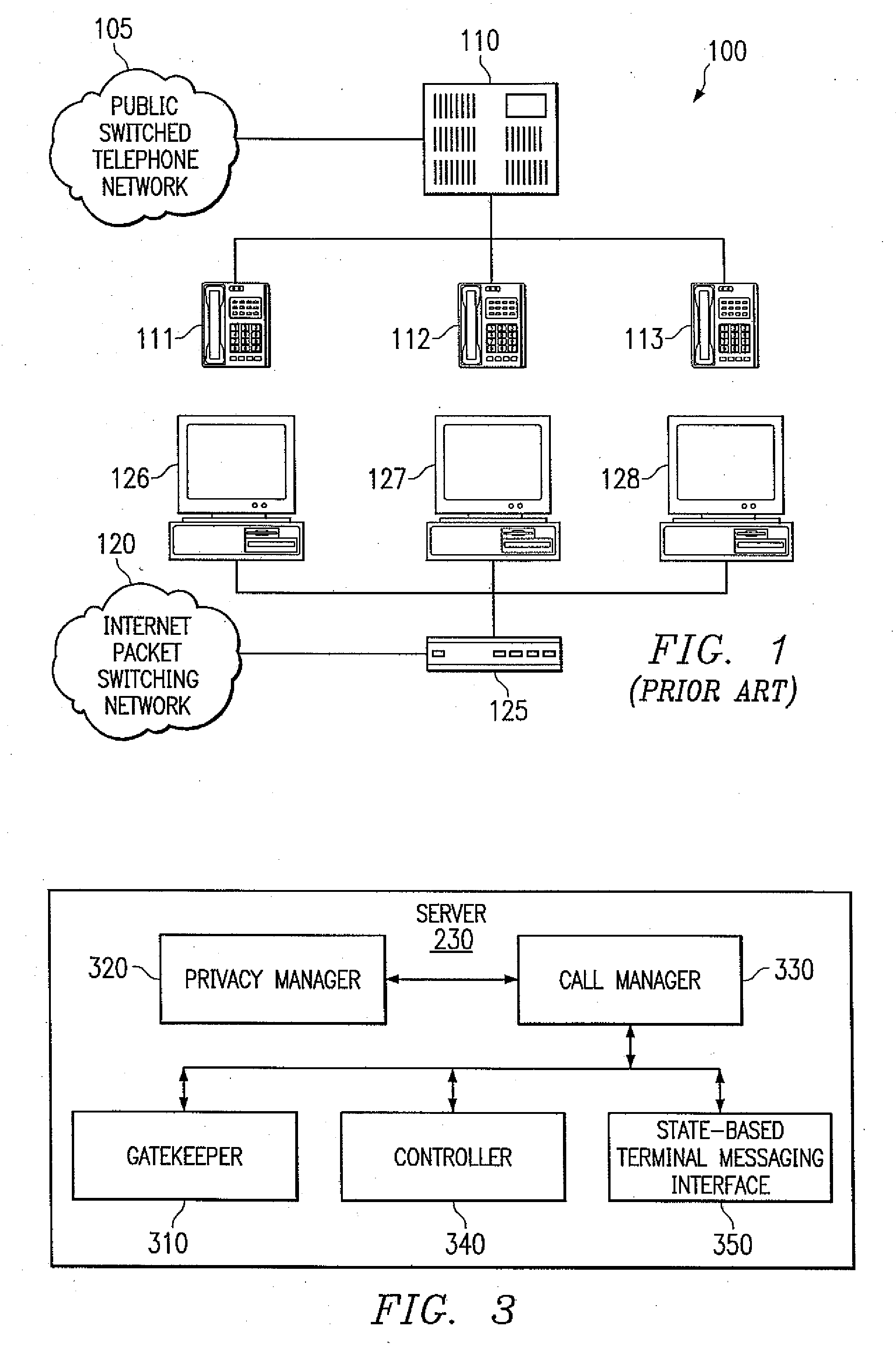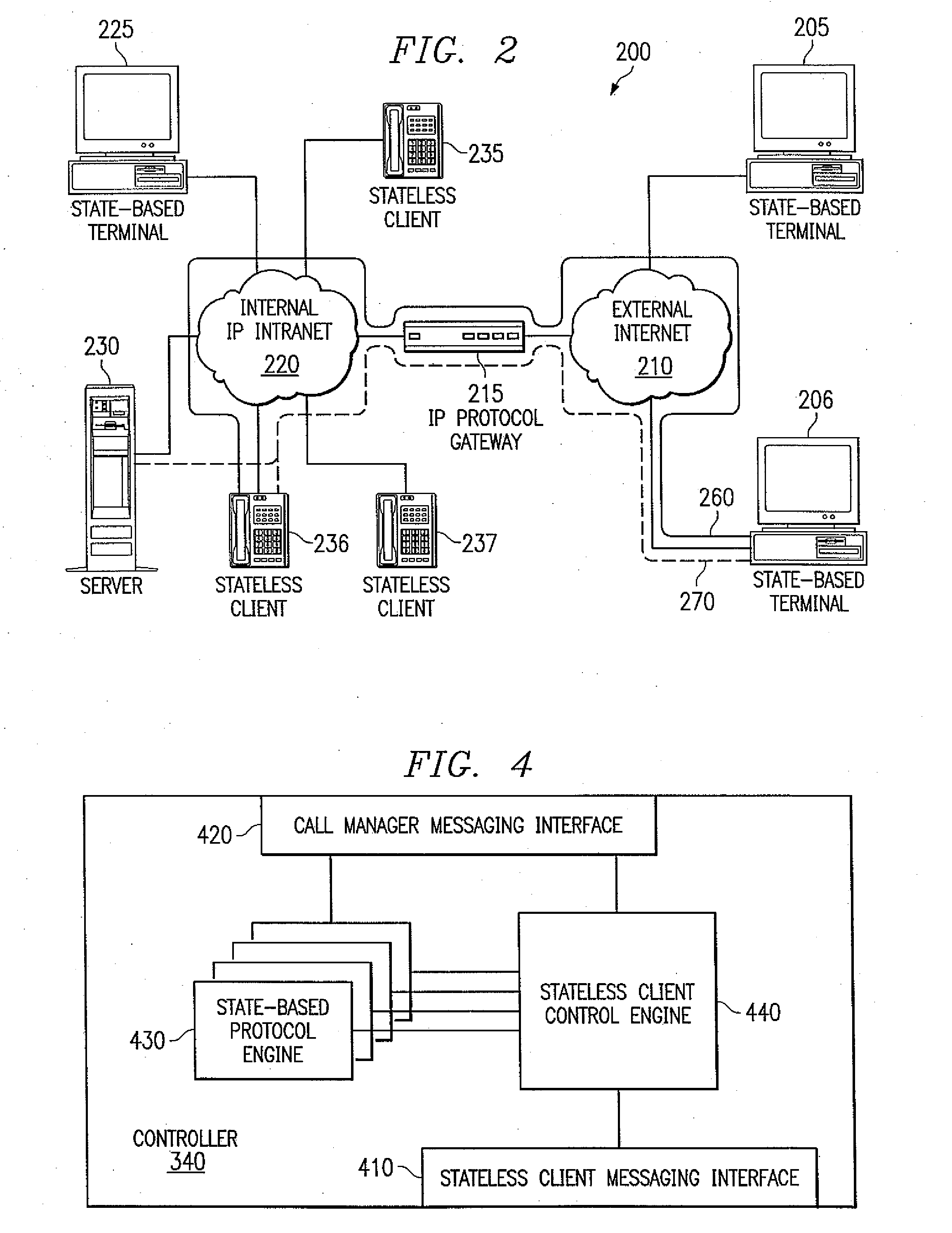System and Method for Performing Signaling on Behalf of a Stateless Client
a stateless client and signaling system technology, applied in the field of communication systems, can solve the problems of high computational power requirement placed on these endpoints, complex protocol and procedure signaling methods, and relatively high-powered and expensive computer processors
- Summary
- Abstract
- Description
- Claims
- Application Information
AI Technical Summary
Benefits of technology
Problems solved by technology
Method used
Image
Examples
Embodiment Construction
[0032]Referring initially to FIG. 1, illustrated is a schematic diagram showing a prior art system100 with totally separate voice and data communication networks. The system 100 includes an external public switched telephone network 105, an internal PBX 110, and telephone end terminals 111, 112, 113 on the voice side. The system 100 includes an external internet packet switching network 120, an internal gateway 125, and end terminal desktop computer systems 126, 127, 128 on the data side. This environment requires completely separate voice network and data network wiring systems often serviced and maintained by two separate departments. The PBX 110 is an internal, private telephone routing and switching device which connects incoming voice messages to the appropriate internal telephone extension and outgoing voice messages to the appropriate external telephone by working in concert with the external, public switched telephone network 105. The gateway 125 is an internal translating d...
PUM
 Login to View More
Login to View More Abstract
Description
Claims
Application Information
 Login to View More
Login to View More - R&D
- Intellectual Property
- Life Sciences
- Materials
- Tech Scout
- Unparalleled Data Quality
- Higher Quality Content
- 60% Fewer Hallucinations
Browse by: Latest US Patents, China's latest patents, Technical Efficacy Thesaurus, Application Domain, Technology Topic, Popular Technical Reports.
© 2025 PatSnap. All rights reserved.Legal|Privacy policy|Modern Slavery Act Transparency Statement|Sitemap|About US| Contact US: help@patsnap.com



